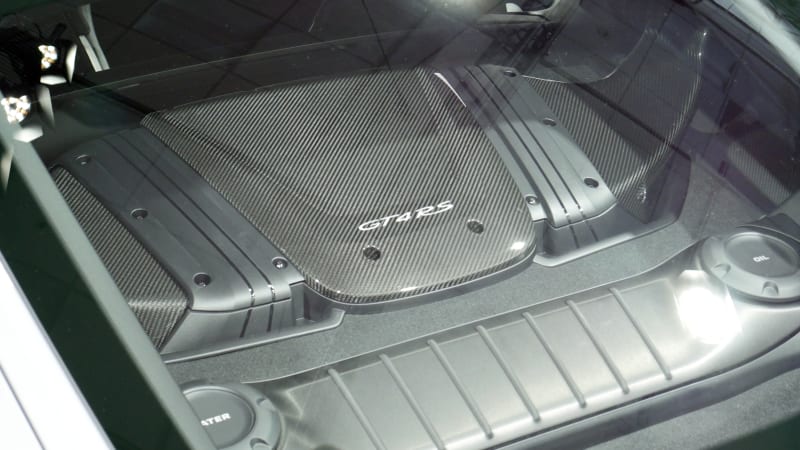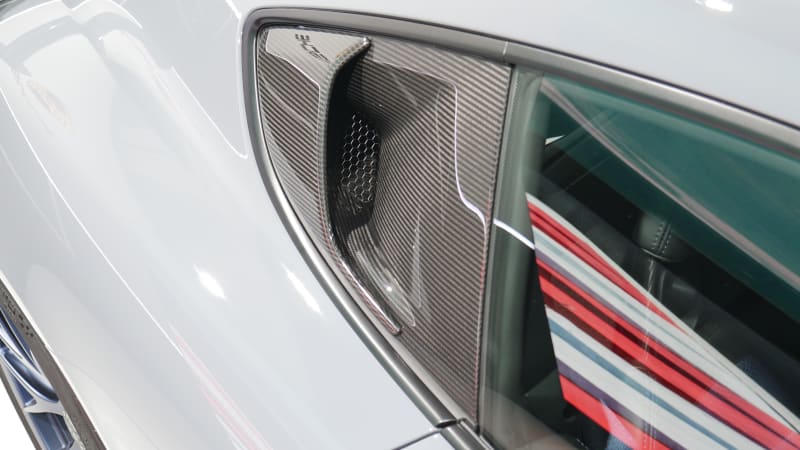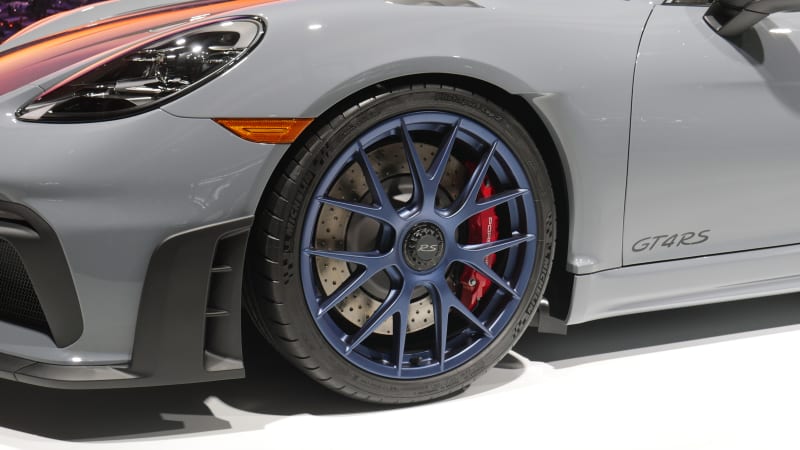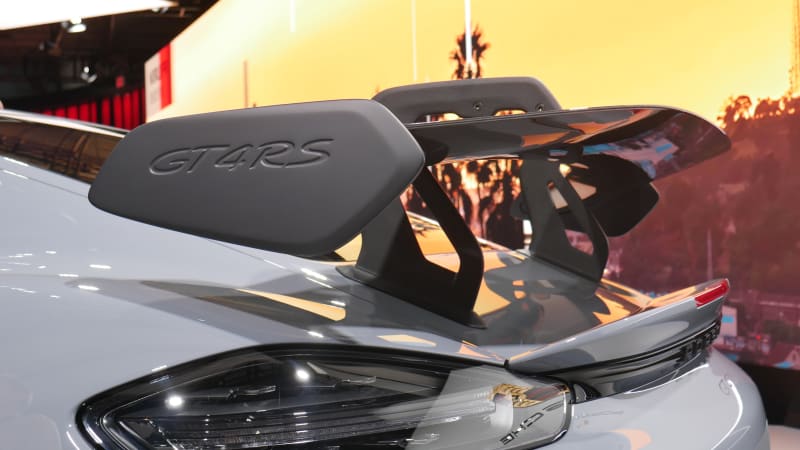Porsche has unveiled the long-awaited (and long-rumored) 718 Cayman GT4 RS. Powered by the 911 GT3’s engine, it’s an ode to driving and engineering that was designed explicitly for maximum performance on the track and maximum enjoyment on a twisty road.
“We didn’t hold back on this one. We want to party with this car, we want to celebrate the naturally-aspirated engine, horsepower and RPM because some day in the future it’ll turn to electric,” explained Andreas Preuninger the director of Porsche’s GT model line. He’s responsible for the great GT-badged cars that the German firm has released in recent years, and he poured all of his experience into the GT4 RS.
The space directly behind the passengers is occupied by a naturally-aspirated, 4.0-liter flat-six engine borrowed from the 911 GT3. It makes 493 horsepower and 331 pound-feet of torque in this application. Porsche aficionados will immediately notice that those figures are slightly below the GT3’s, which check in at 502 and 346, respectively, so what gives? We went straight to the source to find out.
“The engine is completely GT3; it is not detuned. It makes about 10 horsepower less than in the GT3 because we have a longer exhaust system now that the engine is not in the back, so we lose some horsepower due to backpressure,” Preuninger said. That’s settled, then.
Porsche quotes a 3.2-second sprint from 0-60 mph — a figure that makes the RS about half a second quicker than the GT4 — and a top speed of 196 mph. The engine spins the rear wheels via a seven-speed dual-clutch automatic transmission linked to a pair of steering wheel-mounted shift paddles, and engineers made the gearing shorter to improve acceleration. Want a stick? Not a chance, Porsche told us.
“No, it’s not coming with a manual. Why not? Because there’s no manual available that we can mount in the GT4 platform that can handle the RPM and the torque of the engine. It’s not because we don’t want to, it’s that there’s nothing there. And, RS always means PDK. We believe the car is made for the race track and that its purpose is to set the best track times. PDK is the way to go,” Preuninger pointed out.
To feed extra air into that new engine, the existing intakes just behind the doors are given a hand by a second set that fills the area normally reserved for tiny rear quarter windows. It’s a cool-looking feature that also creates a one-of-a-kind experience in the cabin. Fine-tuning this feature was easier said than done; Prenuinger told Autoblog that the first test cars were “deafeningly loud” due to this set-up. His team’s work paid off, and the end result is what he labeled “the most intense acoustic experience in a GT car,” which is high praise considering his resume includes instant classics like the 911 GT2 RS.
There is a lot of chassis wizardry going on underneath the body. The RS notably receives a specific suspension system that’s adjustable and whose various parts are connected to the body via ball joints — that’s a feature more often found on race cars as well as the new GT3.
It sounds — pardon the pun — like you’ll hear the GT4 RS before you see it but it’s not exactly subtle to look at, either. Riding on center-locking 20-inch wheels, it gains a redesigned body kit that includes a front splitter and the GT3’s swan neck rear wing. These add-ons aren’t just for show: they increase downforce by about 25% compared to the 718 Cayman GT4. Porsche also fitted carbon fiber hood and fenders, plus a thinner rear window to keep weight down to 3,227 pounds. That’s 49 pounds less than the automatic version of the GT4.
Step inside and, in spite of the super-Cayman’s ambition to rule the track, you won’t feel like you’re in a 24 Hours of Le Mans racer. Passengers benefit from all of the comfort and technology features buyers expect in a car in 2021, including a touchscreen-based infotainment system with navigation, as well as air conditioning. The seats are fixed-rake carbon fiber seats with extremely aggressive bolstering, but they’re available in plenty of other Porsches, including the GT3 and regular GT4. There are some bits that set the RS apart, including a tachometer with a 9,000-rpm redline and fabric door pulls, but Porsche’s aim was to make a car that’s also enjoyable to drive on public roads.
All told, the GT4 RS is more than the sum of its parts. It recently lapped the 20.8-kilometer version of the Nürburgring track in 7:09.300 and it went around the 20.6-kilometer track in 7:04.511. For context, the GT4 RS is 23.6 seconds faster than the GT4 on the shorter track, which is a significant difference. Granted, not everyone lives near the ‘Ring, but this time argues the GT4 RS was designed for serious performance.
“This car will make history,” Preuninger concluded.
Porsche will present the 2022 718 Cayman GT4 RS at the 2021 edition of the Los Angeles auto show, which opens its doors to the press on Wednesday and to the general public on November 19. Deliveries will start in the summer of 2022, and pricing starts at $143,050 including a mandatory $1,350 destination charge. That’s about $40,000 more than the regular GT4. The list of options will include the Weissach package, shown in these photos, which adds several carbon fiber parts (door mirror caps, intake surrounds and the rear wing) and exposes the carbon fiber hood rather than painting it. Weissach can been enhanced further with magnesium wheels, including those painted the blue color you see here.
Senior Editor James Riswick contributed to this report.
Source: www.autoblog.com




